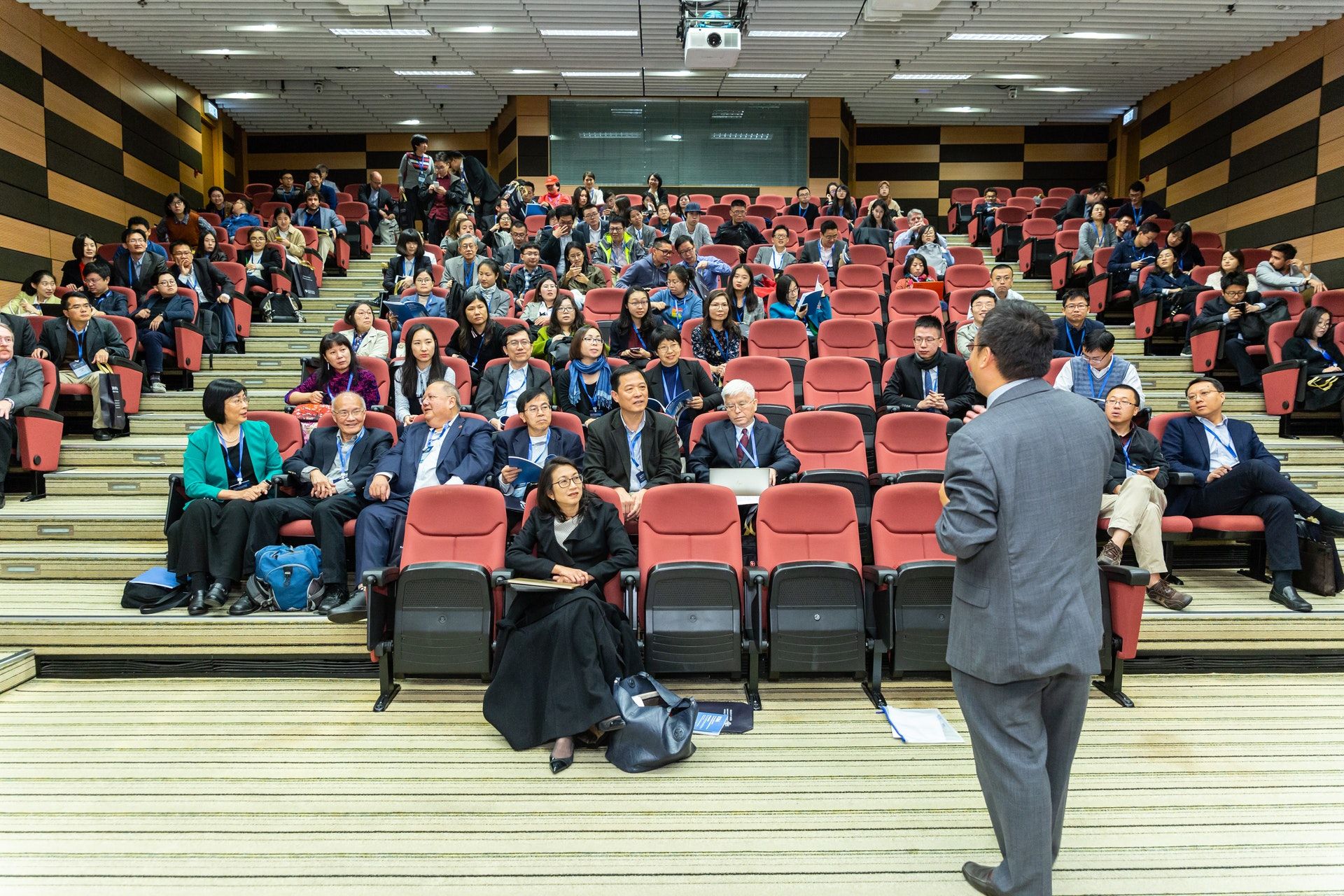For a business to thrive, efficient communication is paramount. Every business owner or business management team is always looking for ways to get their entire team, whether remote employees, their suppliers, or their consultants, on the same page. This is why in-person meetings have, for a long time, been a huge driver of business travel.
However, in the information age that we now live in, one does not have to travel for in-person meetings and conferences. By making use of WebRTC technology, you can have interactive, virtual in-person meetings and conferences over the internet. Among the various forms of virtual meetings, webinars and webcasts are proving ever more popular for business and personal communication. But what is the difference between these two communication formats?
At first glance, there aren’t many differences between webinars and webcasts. One may think they are all the same, and the different names are merely technical jargon that techies and tech companies use to sell products. After all, don't both terms refer to a virtual meeting? In reality, however, when you explore the two forms of multimedia internet communication, you will realize just how different they really are.
Webinars are live presentations conducted over the internet. Being a live stream, the presentation is interactive, and the speaker and audience get the opportunity to ask and answer questions via text chat or email. On the other hand, webcasts entail broadcasting presentations over the internet. The presentation may be live or may be pre-recorded for webcasting, where the audience can view the video on demand. Furthermore, webcasts are almost always not interactive.
As you can appreciate, there is a lot to unpack when comparing webinar vs. webcast. Herein we will delve into the difference between the two forms of virtual meetings and when and where you should deploy either of the two.

Webcast Vs. Webinar: The Differences
#1. Differences in Features
While modern forms of both webinars and webcasts use the highly effective WebRTC platform, each of these online presentation formats is markedly different when it comes to features. WebRTC includes real-time communication standards that make multimedia communication via the browser possible. These standards power browser-based teleconferencing, video conferencing, webinars, and webcasts. As such, webinars and webcasts are the same at their core.
However, these two forms of communication are remarkably different beyond their core technology. For instance, webinars are designed to be interactive and provide a more collaborative virtual meeting room and environment. To make this possible, webinar software, especially advanced webinar software such as MegaMeeting, adds another layer of complementary features. The additional features extend the functionality of the basic WebRTC standards.
In the case of MegaMeeting, hosts receive access to screen sharing, file sharing, secure text-based chat, and other features. The screen-sharing feature allows presenters to share their desktop view with the audience. As such, the attendees of the webinar can view any active application that the presenter uses on his or her desktop. Everyone in the meeting has access to the content, documents, and software in use. This feature is particularly helpful in software or product demonstrations and training.
The file-sharing feature allows meeting attendees to share large files with other attendees via a secure, encrypted environment. To share a file, you simply upload the file and every other attendee has access to the shared data. It is equally easy to view the shared files; one only needs to download the files. In a nutshell, this feature gets all participants on the same page.
The chat feature gives all attendees the ability to contribute to a discussion in a controlled manner. Rather than everyone talking in the meeting, thereby interrupting the presenter, attendees can share their views, as well as ask and answer questions, all live in the chat window.
The combination of these three features make webinars very interactive. Everyone gets involved in an informative and educational session.
On the other hand, webcasts are designed to focus more on the presentation. As such, webcasts are devoid of numerous features that webinars have as standard features. For instance, webcasts typically lack chat, screen sharing, and registration features as, more often than not, they do not need them. However, to improve the effectiveness of the presentation, many webcasts will have a PowerPoint or slide share feature.
In summary, when comparing a webinar vs. webcast from a features standpoint, you will realize webinars are feature-filled, and webcasts generally have bare-minimum features.
#2. Differences in Implementation
There's a difference in how these two forms of virtual meetings are implemented and used. For instance, there is a marked difference in the content presented in a webcast vs. webinar. In a webinar, the focus is to provide the necessary information while engaging the audience. As such, in addition to presentations, the host of the webinar may also use polls and surveys, Q&As, screen sharing, and shared files to provide a comprehensive and more in-depth experience.
On the other hand, webcast presentations are different. Given that the flow of information is one direction, the focus is more on what the presenter is saying. Moreover, webcasts use far fewer presentation aids. Only a few necessary aids, such as slides, are typically used in webcasts.
#3. Differences in Audience Size and Make-Up
Fundamentally, virtual meetings improve audience access to the meetings. That said, webcasts are typically made available to a bigger audience than webinars are. For example, through MegaMeeting webinar software, as many as 500 attendees can access a webinar. While this number is substantially high for webinar software, it pales in comparison to the audience number a webcast can reach. Webcasts can reach thousands, or even hundreds of thousands, as is the case with popular webcasts like “TED Talks.”
The difference in audience reach stems from technological constraints. Webinars are intended to be interactive discussion meetings. Therefore, they have webinar tools like chat, file sharing, and screen-sharing capabilities, as well as other necessary features for all attendees and participants to join in on the webinar. Availing such features to thousands of people is difficult at best and impossible at worst.
On the other hand, webcasts are meant to be one-way presentations rather than discussion meetings. This means they do not need to use discussion tools, and users only need access to the footage. Consequently, an audience of hundreds of thousands can access a webcast without any problem.
There is also a difference in audience make-up. Webcasts can have a live, in-studio audience in addition to the online audience, as is the case with TED Talks. Webinars, on the other hand, almost always have an online audience only.
#4. Differences in Interaction Levels
This is a fairly obvious difference. Webinars provide far greater interaction between the host and their attendees. With the inclusion of sharing and chatting webinar tools, audience participation is an inherent, natural part of the session. Attendees have a chance of participating in Q&As, polls, and surveys while attending a webinar.
On the other hand, webcasts do not have any form of interaction whatsoever. The webcast host presents information, and the audience takes it in. The flow of information is one-way, from the presenter to the audience.
That said, businesses can also secure and privatize their webcasts if they need such a function.

Webcast Vs. Webinar: Pros and Cons
Below is a look at the pros and cons of these two forms of one-to-many virtual meetings.
Webinars
Pros
· Highly interactive and intimate
· Better control over the virtual meeting environment
· Q&As and two-way communication are possible
· Effective for teaching and learning
· More flexible than webcasting
Cons
· Limited in the number of people who can participate
· Limited in repeatability (recording of webinars helps to alleviate this issue)
· Internet disruptions can negatively impact webinars as they are live streams
Webcasts
Pros
· Excellent repeatability
· No scheduling necessary
· Highly shareable
· Easier access to the event; no need to register
· Less prone to adverse effects of internet disruption; it's not scheduled, so the audience can access the webcast after the internet comes back up
Cons
· Poor interactivity; the communication between the speaker and audience is one way
· No real-time file or screen sharing or Q&A capability
· Less flexible – once created, a webcast must be completely re-done if the creator is not happy with it
Webcast Vs. Webinar: Which Should You Use?
The choice between a webcast and webinar will boil down to user needs. Every form of a virtual meeting has its benefits and demerits. As the host, the onus is upon you to choose the most effective form of virtual meeting for your particular needs.
For instance, webcasts are particularly effective at providing information simultaneously to a lot more people than a webinar is. Given that webcasts are not time-bound, and users can access and view the pre-recorded video any time and any day, you will have more success in reaching more people with a webcast than a webinar.
This brings us to the next popular user scenario for webcasts – sharing evergreen content. As mentioned above, webcasts are highly repeatable and require no scheduling; you can use this form of a virtual meeting to share evergreen content with your audience. When the quality and accuracy of your content does not change over time, a webcast is an effective form of a virtual meeting to use. For instance, human resource managers can use internal webcasts to train new and remote employees on certain aspects of the company culture and procedures, rather than having in-person training whenever they hire a new team member.
In the same light, when dealing with a repetitive subject matter, in most cases a webcast is the best form of a virtual meeting to hold - for instance, if you wish to build and share FAQs or tutorials. Once you record the webcast footage, you do not have to present the content again. Your audience can always access and view the webcast.
On the other hand, for the most interactive and informative virtual meeting session, a webinar is the most appropriate form of online meeting. Not only do you get to interact with a smaller audience size, which is more intimate and easier to follow, webinars also incorporate a wide variety of tools that enhance interaction. It is virtually impossible to interact effectively while using a webcast. Webinars, on the other hand, excel at providing effective interaction. Such Instances where you should use webinars include while consulting with experts, product presentations and demonstrations (where questions and feedback are essential), and training new staff.
In some cases, however, the best solution is to use a hybrid of the two types of online meetings. Instead of thinking of the meetings in a webinar vs. webcast fashion, you can combine them to form an effective overall user experience. A good example where a webcast-webinar hybrid is used is online courses. A virtual meeting for educational purposes should be interactive, whereby the instructor and the audience (students) can ask and answer questions. In such situations, the instructor can pre-record the lessons beforehand (using the webinar software) and use the footage in a webcast style.
And to meet the needs of the students, the instructor can include features that enhance interactivity with the students. Such features include polls and surveys, text-based chat, voice-based chat, screen share, file share, and so on. The instructor and students can, therefore, virtually meet and interact efficiently. Given that the instructor has already recorded the bulk of the material they want to teach, they are free to interact with the students and answer their questions in person. Moreover, the instructor’s workload, in the long run, is reduced as they do not have to present learning material with a new batch of students.
In Conclusion
In reality, the question being asked should not be “webcast vs. webinar.” Companies and organizations can benefit from both webinars and webcasts as both platforms serve as indispensable tools that are beneficial to businesses across the world. Depending on the information being communicated, the audience, and the purpose of the virtual meeting, you can either use a webinar or a webcast software. Despite their differences, both tools have utility and both tools have a role to play in helping businesses and people communicate efficiently and effectively.
MegaMeeting solves the biggest challenges of modern video conferencing. For users, it is an all-in-one platform that delivers both video conferencing and webinars in a single, simplified interface. For attendees, it is 100% browser-based, making it highly accessible; joining a meeting is instantaneous from a single click. For enterprises, it is highly customizable, with white-labeling options for a private branded solution. For developers, it is API-driven and easy to integrate.
Powered by WebRTC, Node.js, React, and GraphQL, it is a cutting-edge platform that is fun and easy to use for users and developers alike.

